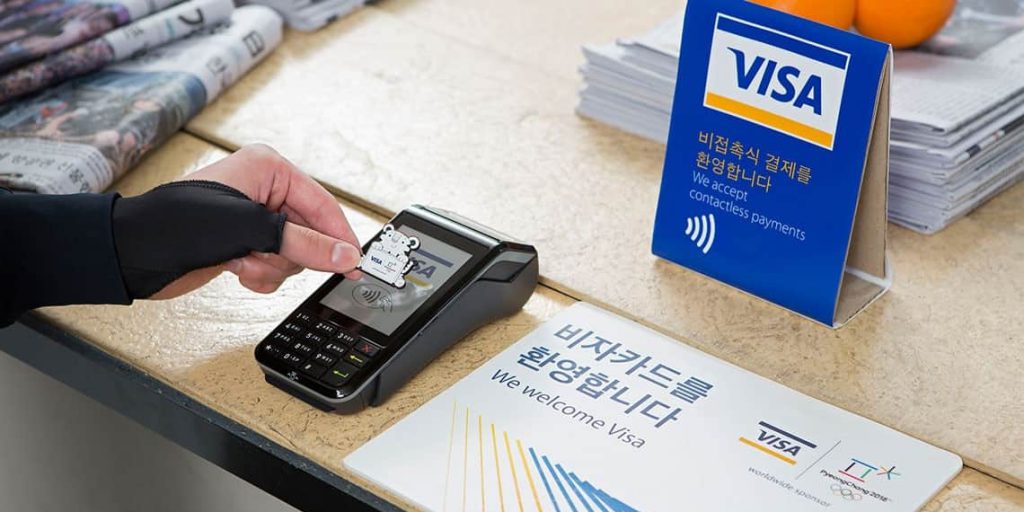Wearable payment devices — yes, they’re a thing — appear to have achieved gold-medal status at the 2018 Winter Olympics in South Korea.
The BusinessKorea news outlet reports that South Korea’s Lotte Card Co., the financial arm of the Lotte department store chain, had expected to sell 100,000 Olympic-themed wearable payment devices for the Winter Olympics. BusinessKorea indicates more than 150,000 devices actually were sold.
But will wearable payment devices skate into the U.S. and other markets?
Team effort at the Olympics
Payment network Visa teamed up with Lotte to sell three wearable payment gadgets during the Olympics: a commemorative sticker, a pair of gloves and a lapel pin. At the Olympics, the wearer of one of these devices could activate a purchase at one of more than 1,000 wireless-enabled payment terminals. The microchip and antenna embedded within the device allowed a “contactless” transaction, without swiping a credit card or debit card, or sticking it into a card reader.
Anyone who wanted to tinker with a wireless payment device had to buy one — either at a Lotte store, on the Lotte website, from Visa vending machines at the Games or at official Olympic stores — and then load it with money before making a purchase.
At the Olympics, each pin sold for roughly $4.70 (U.S.), with a prepaid amount of around $28 or $47, according to Visa. Price tags weren’t available for the gloves or stickers. Prepaid amounts of $28 or $47 were set for the gloves, while a sticker came in four sums: $28, $47, $94 or $188.
Money could be added just once to one of the wearables.
“We’re looking forward to seeing the reaction and adoption from fans and athletes in South Korea,” a Visa representative told the TechRepublic website in February. “While we can’t disclose the number of devices that have been produced and sold thus far, each wearable is a limited-edition item, so they will be highly coveted on the ground at the Games.”
Going global?
TechRepublic pointed out that this wasn’t Visa’s first time to offer wearable payment devices at the Olympics. The company tested payment bracelets and rings at the 2016 Summer Olympics in Rio de Janeiro, Brazil.
BusinessKorea noted that aside from the test in South Korea, the market for wearable payment cards already is being established in the United Kingdom and Australia. No word on when these devices might show up in the U.S.
“Credit card companies are paying attention to whether wearable credit cards will be able to sustain the momentum from the Winter Olympics and create the market in South Korea,” the media outlet says.
BusinessKorea reports that United Kingdom bank Barclays is developing wearable payment devices like bracelets and keychains. Meanwhile, Australia’s Bankwest has launched a payment ring called Halo.
Ironing out the wrinkles
As wearable payment devices are being rolled out, challenges are arising. BusinessKorea says those challenges include a lack of standards for contact payments and problems with device compatibility. One of those problems: Some users at the Olympics ran into trouble making payments with commemorative stickers.
Nonetheless, an official from the credit card industry tells BusinessKorea that commercialization of wearable payments cards is on the horizon, once issues with the technology are worked out.
The TechRepublic story pondered whether wearable payment devices will catch on in the U.S. and other countries.
“I don’t think it’s going to move the needle significantly,” Ramon Llamas, research manager for International Data Corp.’s wearables team, said of the South Korea experiment.
